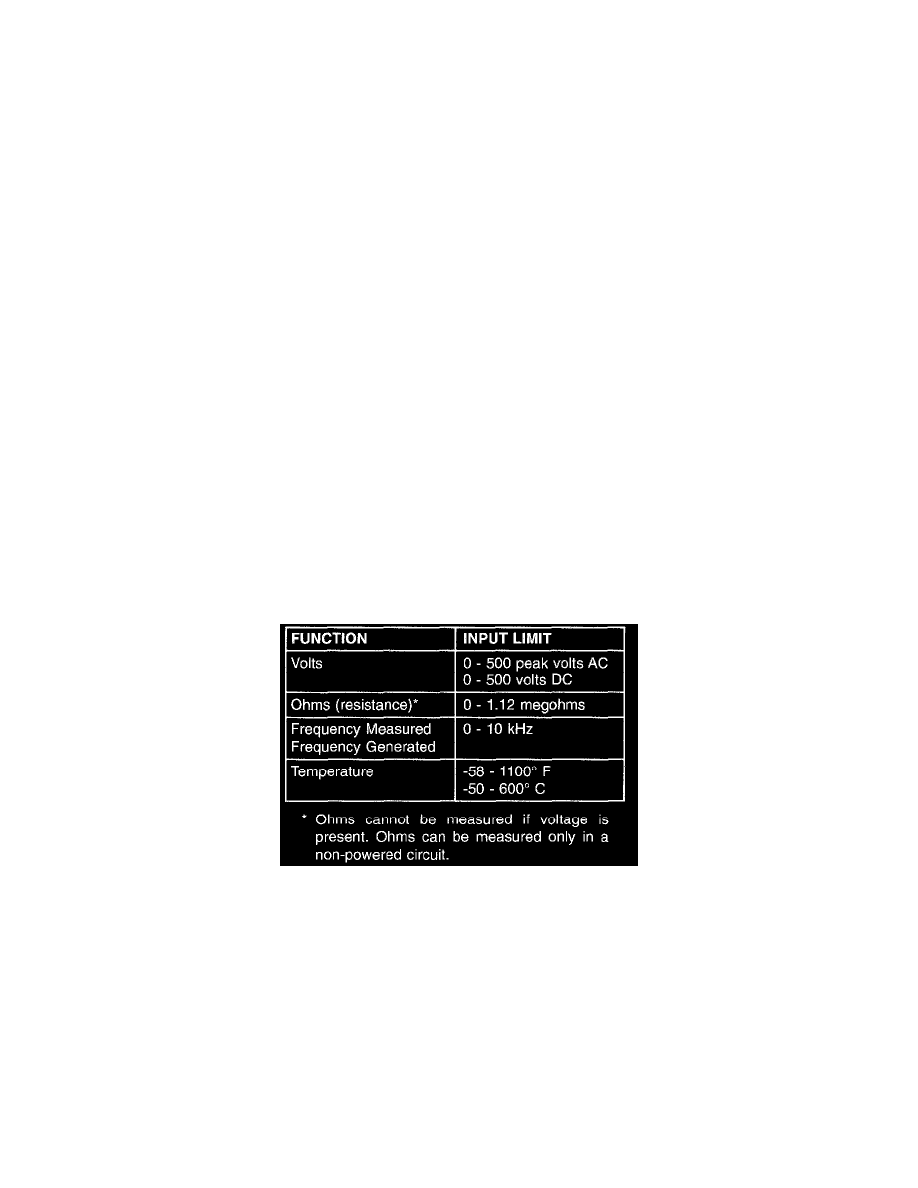Grand Cherokee 2WD L6-4.0L VIN S (1997)

Body Control Module: Vehicle Damage Warnings
Vehicle Preparation For Testing
VEHICLE PREPARATION FOR TESTING
Make sure the vehicle being tested has a fully charged battery. If it does not, false diagnostic codes or error messages may occur.
Vehicle Damage Warnings
VEHICLE DAMAGE WARNINGS
Before disconnecting any control module, make sure the ignition is "off". Failure to do so could damage the module.
When testing voltage or continuity at any control module, use the terminal side (not the wire end) of the connector. Do not probe a wire through
the insulation; this will damage it and eventually cause it to fail because of corrosion.
Be careful when performing electrical tests so as to prevent accidental shorting of terminals. Such mistakes can damage fuses or components. Also,
a second code could be set, making diagnosis of the original problem more difficult.
Road Testing A Complaint Vehicle
ROAD TESTING A COMPLAINT VEHICLE
Some complaints will require a test drive as part of the repair verification procedure. The purpose of the test drive is to try to duplicate the
diagnostic code or symptom condition.
CAUTION: Before road testing a vehicle, be sure that all components are reassembled. During the test drive, do not try to read the DRB screen
while in motion. Do not hang the DRB from the rear view mirror or operate it yourself. Have an assistant available to operate the DRB.
Servicing Sub-Assemblies
SERVICING SUB-ASSEMBLIES
Some components of the body system are intended to be serviced in assembly only. Attempting to remove or repair certain system sub-components
may result in personal injury and/or improper system operation. Only those components with approved Service and Repair procedures should be
serviced.
DRBIII Safety Information
WARNING: Exceeding the limits of the DRB multimeter is dangerous. It can expose you to serious or possibly fatal injury. Carefully read and
understand the cautions and the specification limits.
-
Follow the vehicle manufacturer's service specifications at all times.
-
Do not use the DRB if it has been damaged.
-
Do not use the test leads if the insulation is damaged or it metal is exposed.
-
To avoid electrical shock, do not touch the test leads, tips, or the circuit being tested.
-
Choose the proper range and function for the measurement. Do not try voltage or current measurements that may exceed the rated capacity.
-
Do not exceed the limits shown in the table:
-
Voltage between any terminal and ground must not exceed 5OOv DC or 5OOv peak AC.
-
Use caution when measuring voltage above 25v DC or 25v AC.
-
The circuit being tested must be protected by a 10A fuse or circuit breaker.
-
Use the low current shunt to measure circuits up to 10A. Use the high current clamp to measure circuits exceeding 10A.
-
When testing for the presence of voltage or current, make sure the meter is functioning correctly. Take a reading of a known voltage or current
before accepting a zero reading.
